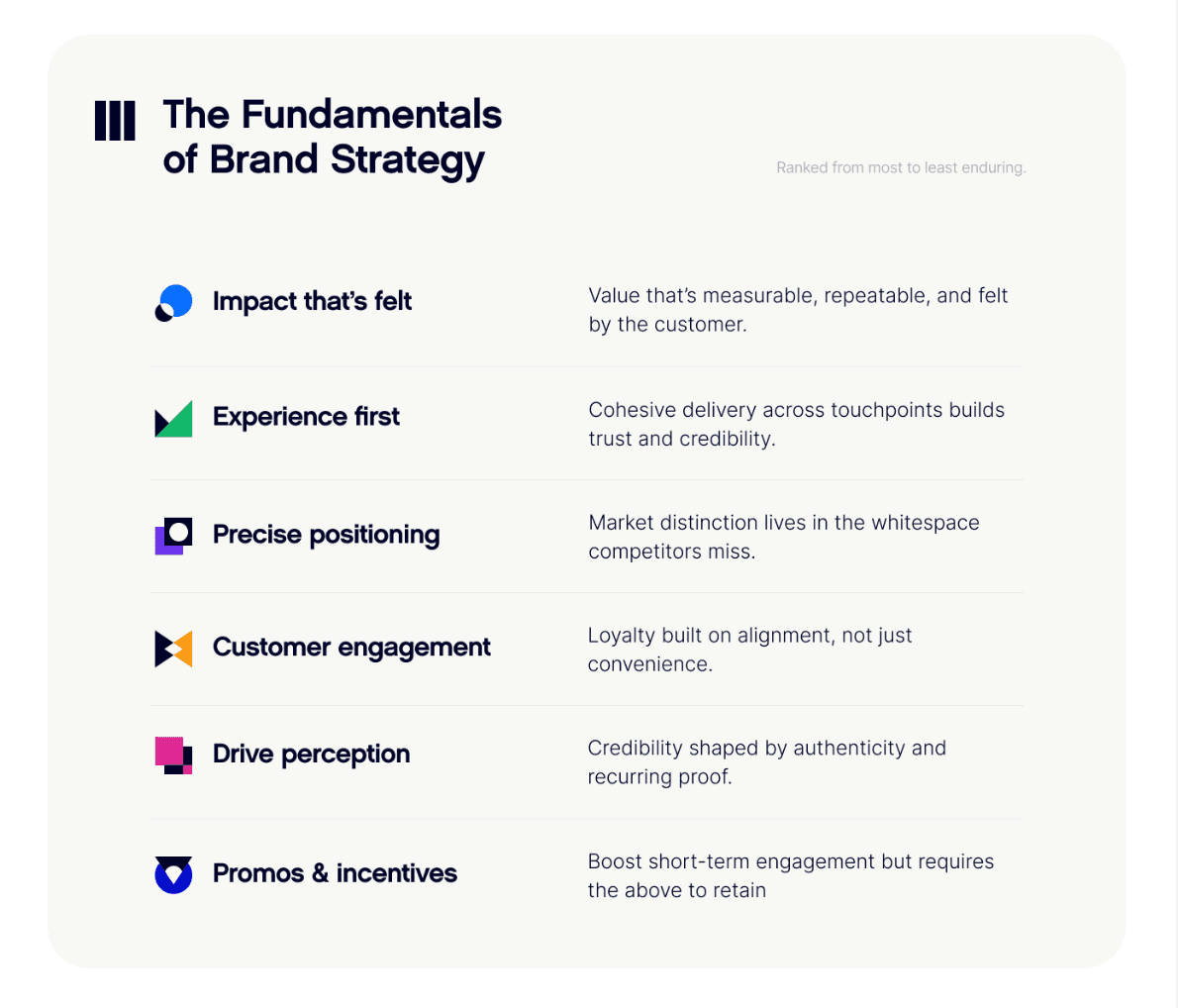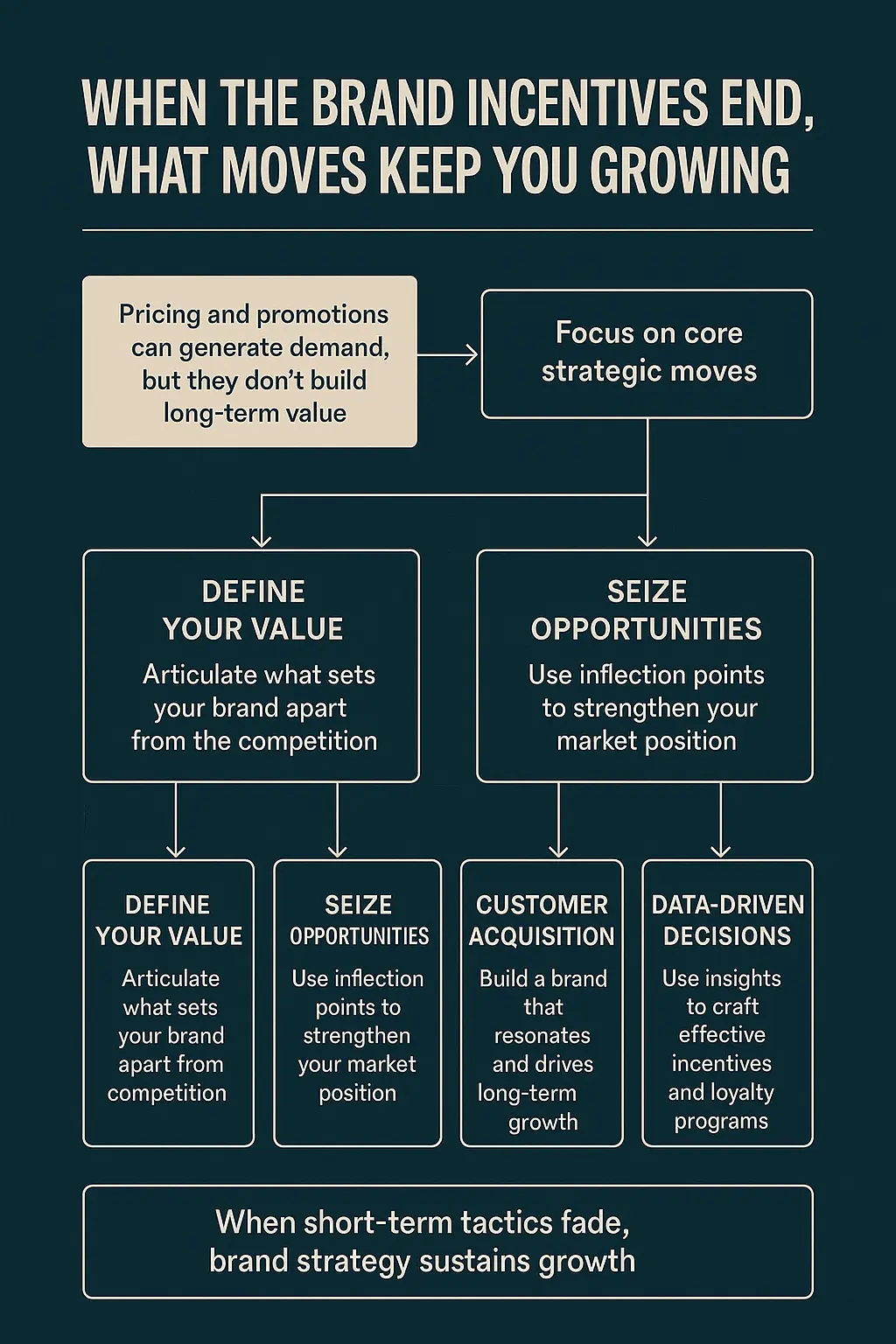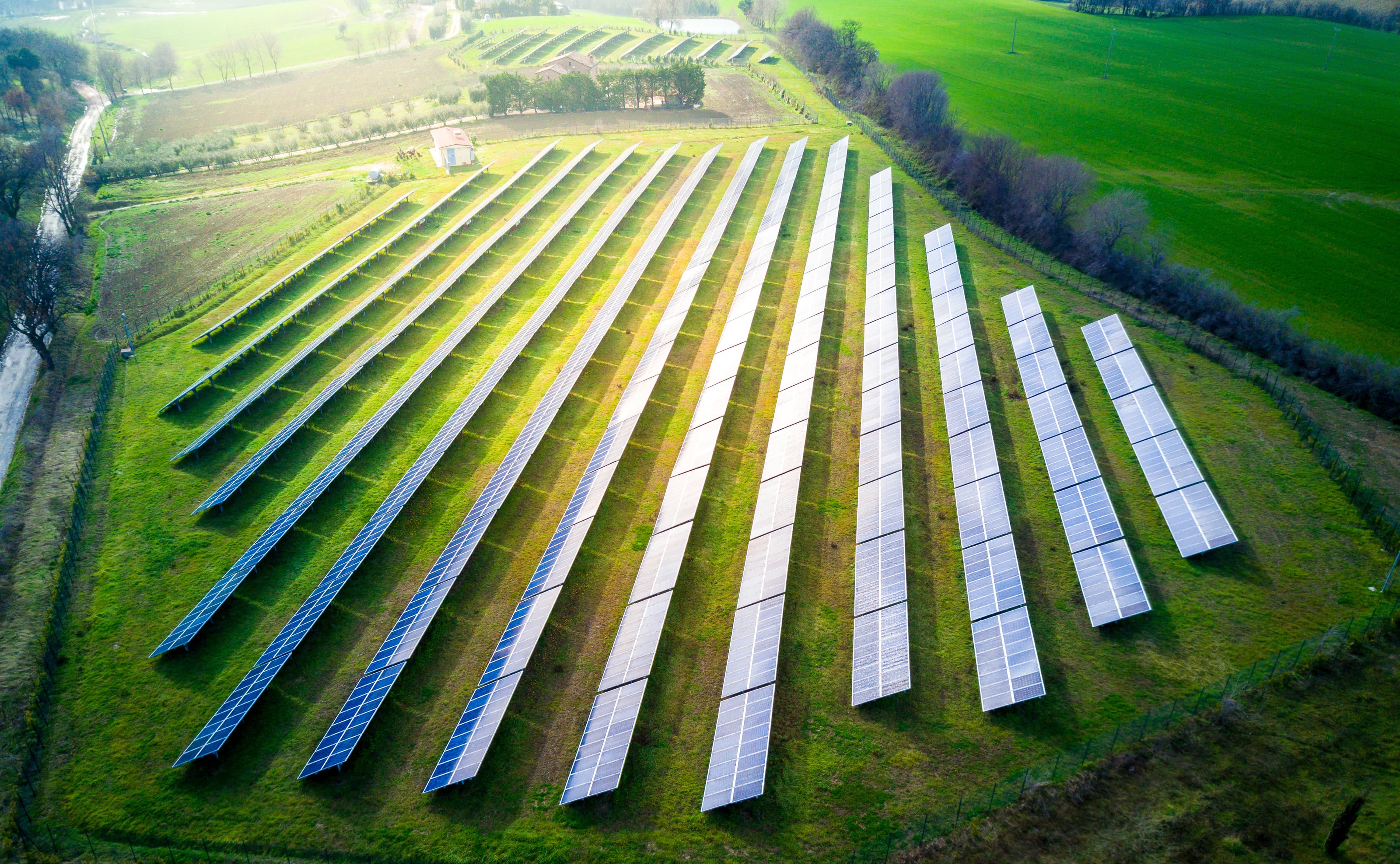0.00%

Signals
When the Brand Incentives End, What Moves Keep You Growing
Pricing and promotions are the sugar rush of marketing plays, but they aren’t a foundation to build from. Marketing incentives, which are rewards given by a business to customers to promote conversions, often fall into this category.
They can drive short-term demand, but they won’t enhance your market position or articulate the value you’re built to deliver. However, marketing incentives can significantly boost brand awareness and customer engagement when aligned with the brand's values, helping to shape public perception and encourage ongoing interaction. Too often, brands rely on incentives to generate movement, mistaking temporary gains for lasting preference. Urgency consistently does one thing… it fades. Incentives give customers a reason to act, enhancing campaign effectiveness in the short term but not necessarily building long-term loyalty. Incentives such as discounts, exclusive perks, and monetary rewards can drive engagement and motivate both current and potential customers to make a purchase.
A good strategy involves selecting the right rewards, including non monetary rewards like free products or free coffee, to create rewarding experiences and increase sales.
For example
For years, the 30% federal tax credit served as a powerful incentive for residential solar adoption - and a central pillar of many go-to-market strategies.
Recently, the announcement that the 30% tax credit may be phased out by the end of 2025 has been causing disruption to homeowners and businesses alike. While this change presents challenges, let's consider the opportunities.
Solar companies have an incentive themselves to move beyond transactional marketing. If the value proposition has centered on incentives, this is the moment to define a strategy that establishes impact, experience, and distinction. Then bring that strategy to life across messaging, digital, and content. Incentive marketing, while effective in boosting engagement and driving conversions, should be complemented by a broader strategy to strengthen brand loyalty through tangible benefits.
This isn't unique to solar. When external advantages fade, the strongest brands refocus on what makes them matter.
Nvidia: Spotted the AI wave early and built for it. Evolved from gaming hardware to the infrastructure powering the future of computing. Briefly surpassing Microsoft as the world's largest company. (Techcrunch)
Apple: Reframed the brand around experience, not specs. Design, ecosystem, and usability became the value as price became secondary.
Pfizer: During COVID, Pfizer moved fast, led vaccine development, and became globally visible. In 2021, they rebranded from a traditional pharma company to a science-first, research-driven brand built for the future.
In each case, these brands faced difficult circumstances, or recognized unique opportunities, to sharpen their strategy and define their place in the market.
Why customer acquisition matters
Brand strategy defines why customers should care about your brand. When clearly defined and consistently executed, it becomes the engine behind long-term market traction and customer resonance. Implementing effective marketing incentives can lead to increased customer satisfaction and engagement, but they must align with the broader brand strategy to be truly impactful.
In the end, customers don't remember markdowns or influencer campaigns. They remember the experience and the results your product or service actually delivered. Incentives can create memorable experiences that help customers build an emotional connection with a brand, but these must be part of a larger, meaningful customer journey.

Seizing the moment
The best brands aren't built in boom times. They're defined in the pivots where market conditions shift, external advantages fade, and the fundamentals are all that remain.
This is where strategy matters most. Not just in what a company does, but in how it communicates value, shapes perception, and consistently evokes understanding and belief in what it offers.
Matic helps organizations define who they are, how to express it, and why it matters to the audiences that drive growth. Beyond campaign messaging, we develop strategic positioning, grounded in data and built to scale.
For many industries, like solar, this is that moment. The brands that clarify and reinforce their enduring value will lead. The rest will stay busy chasing margins.
Data-driven decision making
In today’s competitive landscape, data-driven decision making is the backbone of any successful incentive program. By harnessing the power of data and analytics, brands can gain a deep understanding of customer behavior, preferences, and purchasing decisions—insights that are essential for crafting effective marketing incentives and loyalty programs. Rather than relying on guesswork, companies can use real-time data to identify their most loyal customers, segment their target audience, and deliver rewards that truly motivate customers to take action.
For example, tracking customer lifetime value and repeat purchases allows businesses to pinpoint which customer segments are driving the most value, and to reward them with exclusive discounts, early access to product launches, or free samples. Monitoring referral program participation can reveal which incentives are most effective at acquiring new customers and reducing customer acquisition costs. By continuously measuring these key metrics, brands can optimize their marketing strategy, ensuring that every incentive marketing campaign is tailored to boost sales, increase customer satisfaction, and drive customer loyalty.
Data-driven decision making also empowers brands to personalize their incentive programs, offering rewards that resonate with individual preferences—whether that’s limited-time offers, gamified elements, or unique experiences that build loyalty and encourage repeat purchases. This level of personalization not only increases engagement among existing customers but also attracts potential customers who are seeking tangible benefits and memorable experiences.
Ultimately, companies that embrace data-driven decision making are better equipped to adapt their marketing efforts, maximize the impact of their loyalty programs, and drive growth in both customer acquisition and retention. By leveraging the right tools and analytics, businesses can create incentive programs that deliver real value, foster brand loyalty, and ensure long-term success in a rapidly evolving market.

Final thoughts
When short-term levers fade, strategic foundations are what remains.
We help brands develop and activate their strategy across experience, communication, and delivery. If your organization is ready for change, Matic is ready to help. Let's talk.
Don't miss a beat - subscribe to Signals on LinkedIn and get an alert every time a new edition drops.

About Matic
We're a B2B transformation agency creating strategic advantage through branding, websites, and digital products.


